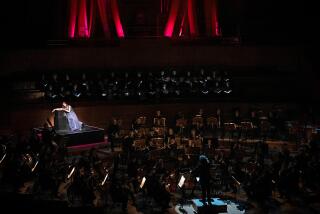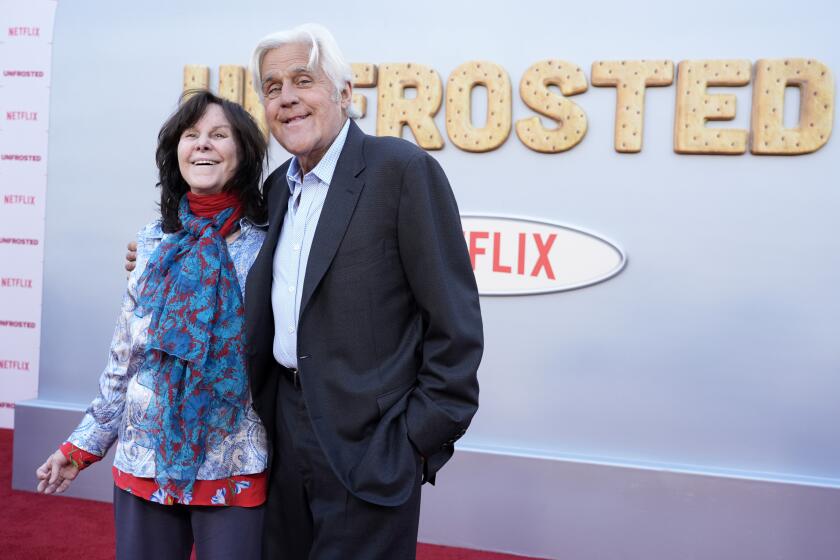R S V P : Blasting Back to the Past in Celebration of Music
- Share via
It was back to the ‘30s, even though many at the Los Angeles Junior Philharmonic gala had never been there.
“I don’t remember the ‘30s, because I wasn’t born until 1939, but I do remember the music, because my parents played all their old records,” said Joseph LaBonte, honoree at the dinner-dance Wednesday night at the Regent Beverly Wilshire.
Formed in 1934, the Junior Philharmonic Committee’s focus is on music education for children, through the Music Mobile and Symphonies for Youth programs.
LaBonte, chairman of the Los Angeles Philharmonic Assn., recalled how his love of music had been fostered not just at home, but also at school. “It’s a little scary now, when children in our schools don’t get introduced to music,” he said, stressing in his acceptance speech the importance of outreach to young music lovers.
Esa-Pekka Salonen, the philharmonic’s music director, thanked LaBonte for having “the strength and power to fight for quality.” Salonen also said the quality of his orchestra stems not only from the wonderful musicians but from “the people who believe in us.”
Before dinner, the cocktail reception and silent auction occupied the crowd--which included Dolly Gillin, Shauna Trabert with Karl Honeystein, Caroline Ahmanson, Erna Schulhofer and L.A. Philharmonic Managing Director Ernest Fleischmann, who eschewed the conventional black tie for a clerical-style collar that set him apart from the laity.
“This all looks so glamorous,” LaBonte said, surveying the ballroom’s mirrored walls that reflected the opulence of dining tables adorned with lush, sweet-smelling floral centerpieces.
“But I know how hard these ladies work to put on these events,” LaBonte added. “I’ve seen the broken nails, the grungy T-shirts, the long hours behind this elegance.”
The hard-working ladies, with not a broken nail in sight, included gala chairwoman Diane Dykema and Junior Philharmonic Committee President Katherine Dagermangy.
Entertainment included a re-creation of a ‘30s-style radio show by the group Vocalworks. Then Rosemary Clooney took a sentimental journey to all the familiar places with such numbers as “Our Love Is Here to Stay” and her 1951 hit “Come On-a My House.”
More to Read
The biggest entertainment stories
Get our big stories about Hollywood, film, television, music, arts, culture and more right in your inbox as soon as they publish.
You may occasionally receive promotional content from the Los Angeles Times.










